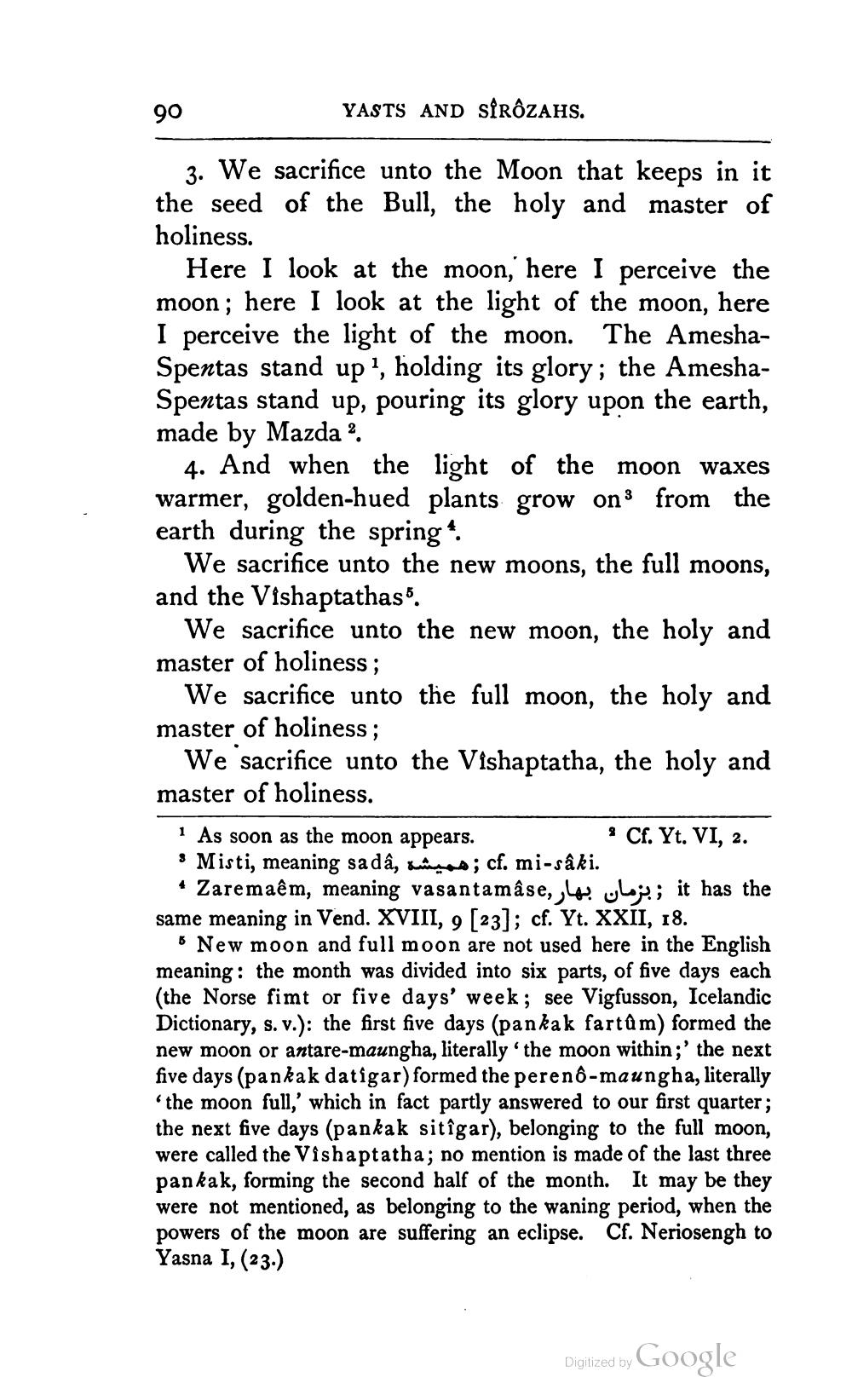________________
90
YASTS AND STRÔZAHS.
3. We sacrifice unto the Moon that keeps in it the seed of the Bull, the holy and master of holiness.
Here I look at the moon, here I perceive the moon; here I look at the light of the moon, here I perceive the light of the moon. The AmeshaSpentas stand up, holding its glory; the AmeshaSpentas stand up, pouring its glory upon the earth, made by Mazda 2.
4. And when the light of the moon waxes warmer, golden-hued plants grow on from the earth during the spring *
We sacrifice unto the new moons, the full moons, and the Vishaptathas.
We sacrifice unto the new moon, the holy and master of holiness;
We sacrifice unto the full moon, the holy and master of holiness;
We sacrifice unto the Vishaptatha, the holy and master of holiness. 1 As soon as the moon appears.
: Cf. Yt. VI, 2. Misti, meaning sada, bias; cf. mi-sâki. * Zaremaêm, meaning vasantamase,, 44 Los; it has the same meaning in Vend. XVIII, 9 [23]; cf. Yt. XXII, 18.
6 New moon and full moon are not used here in the English meaning: the month was divided into six parts, of five days each (the Norse fimt or five days' week; see Vigfusson, Icelandic Dictionary, s.v.): the first five days (pankak fartûm) formed the new moon or antare-maungha, literally the moon within;' the next five days (pankak datigar) formed the perenô-maungha, literally
the moon full,' which in fact partly answered to our first quarter; the next five days (pankak sitîgar), belonging to the full moon, were called the Vishaptatha; no mention is made of the last three pankak, forming the second half of the month. It may be they were not mentioned, as belonging to the waning period, when the powers of the moon are suffering an eclipse. Cf. Neriosengh to Yasna I, (23.)
Digitized by Google




